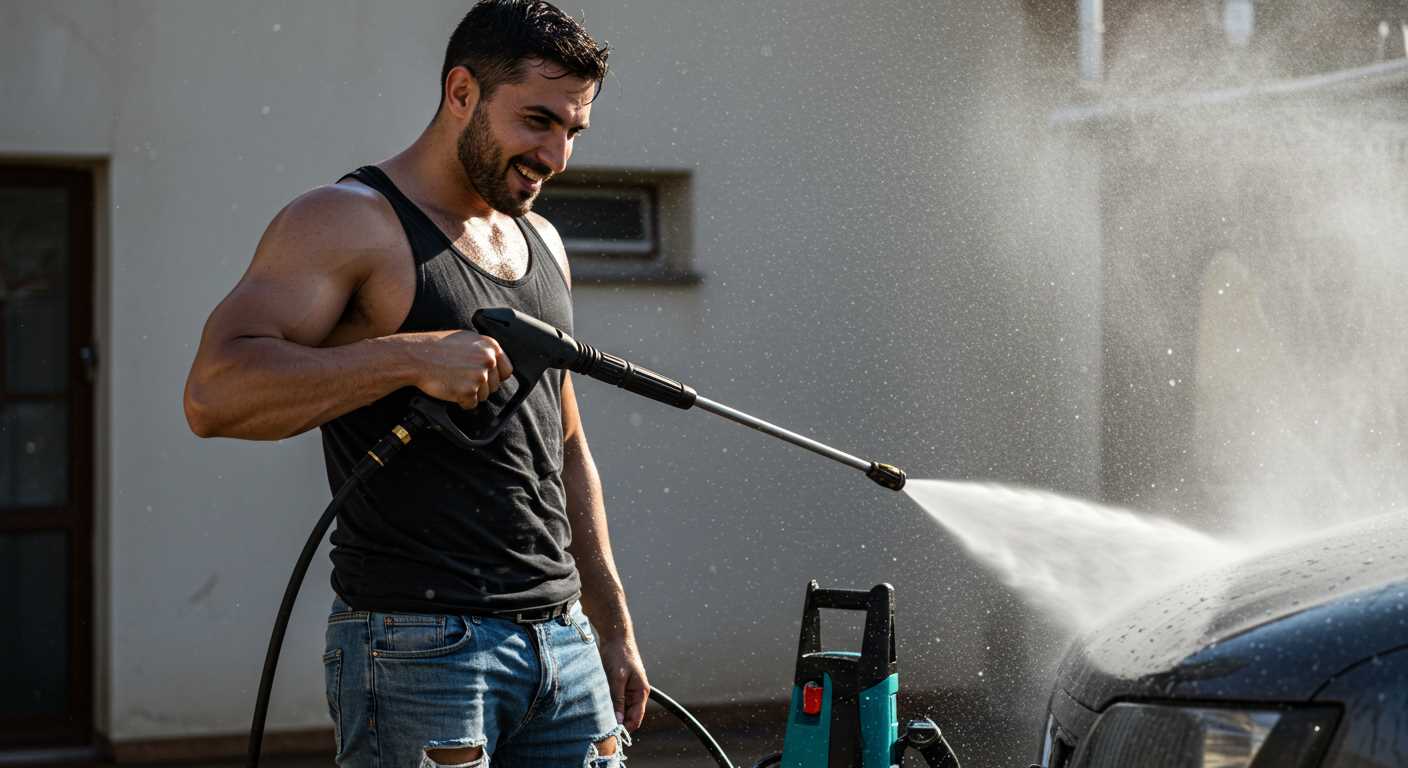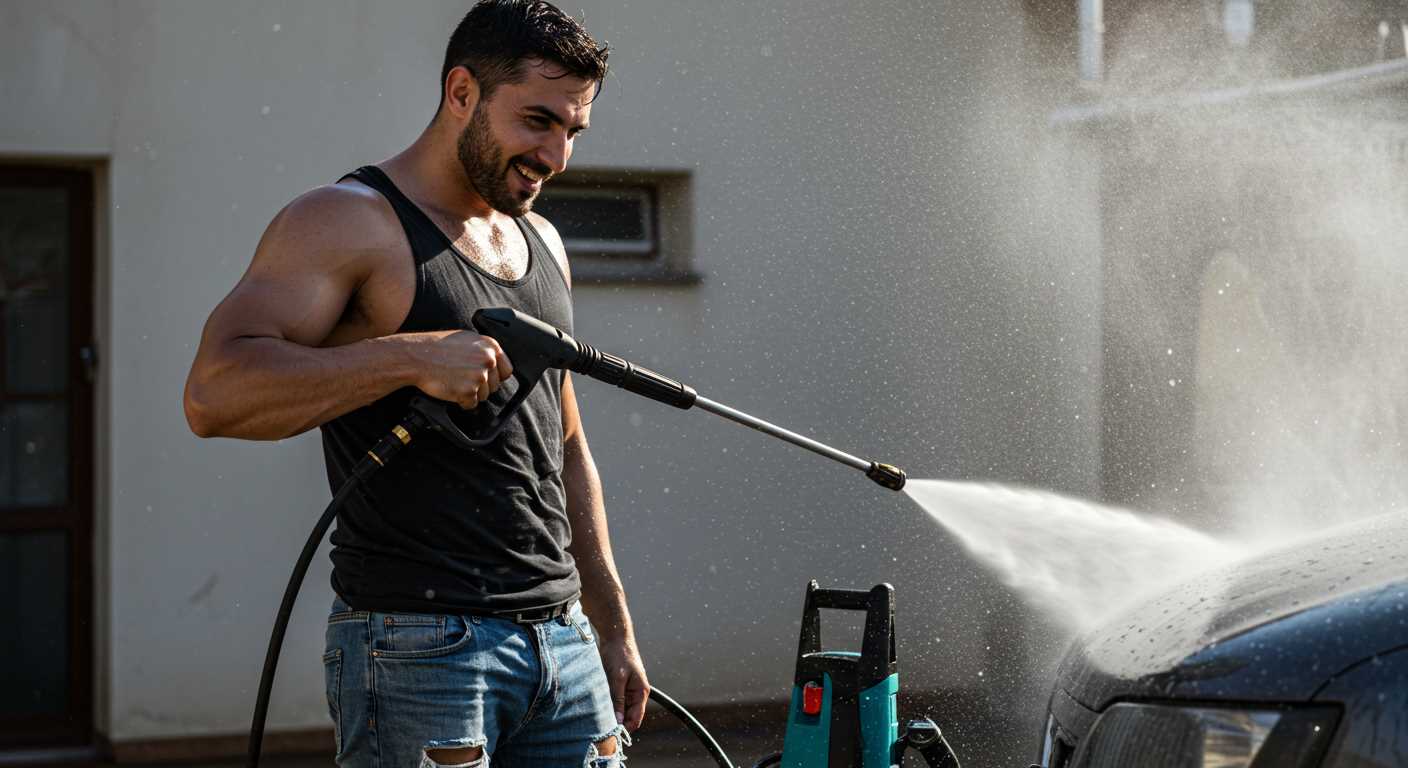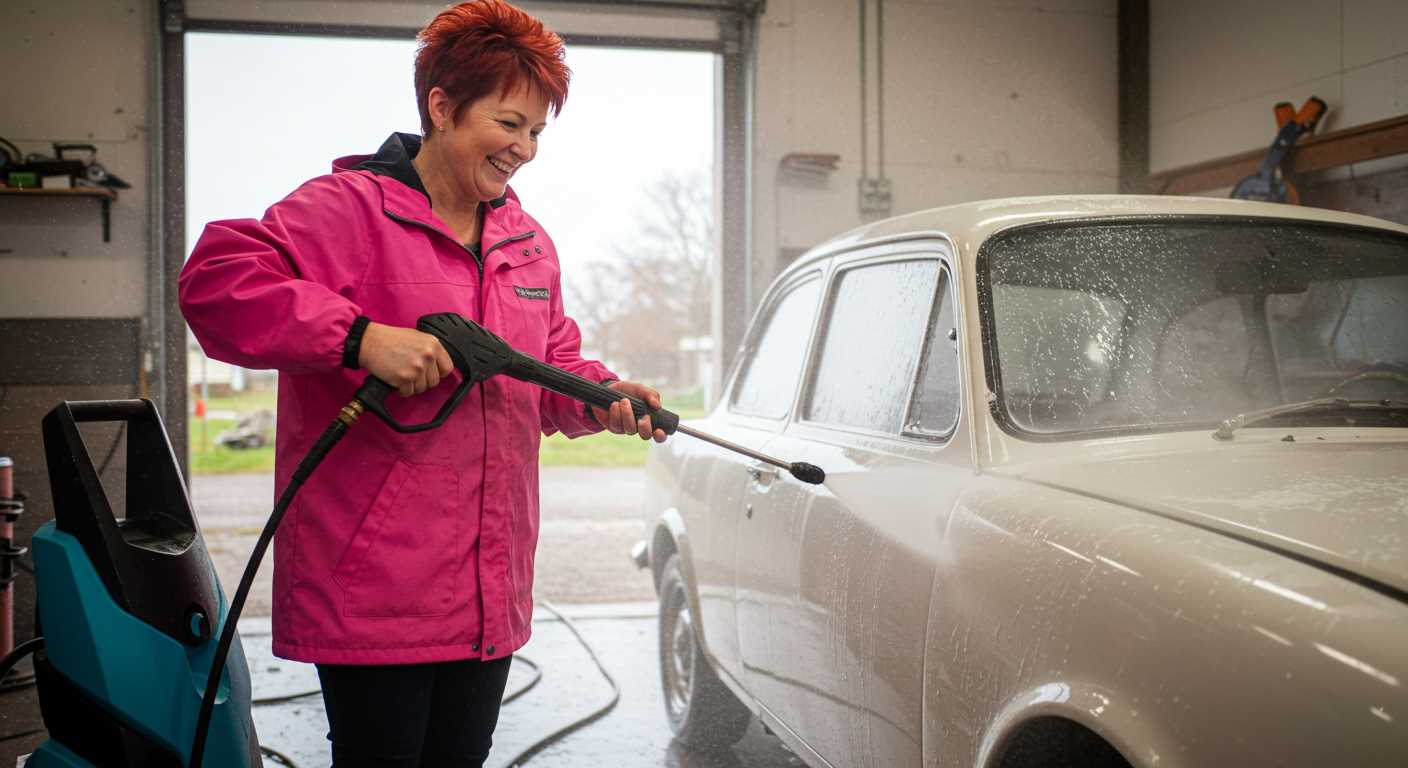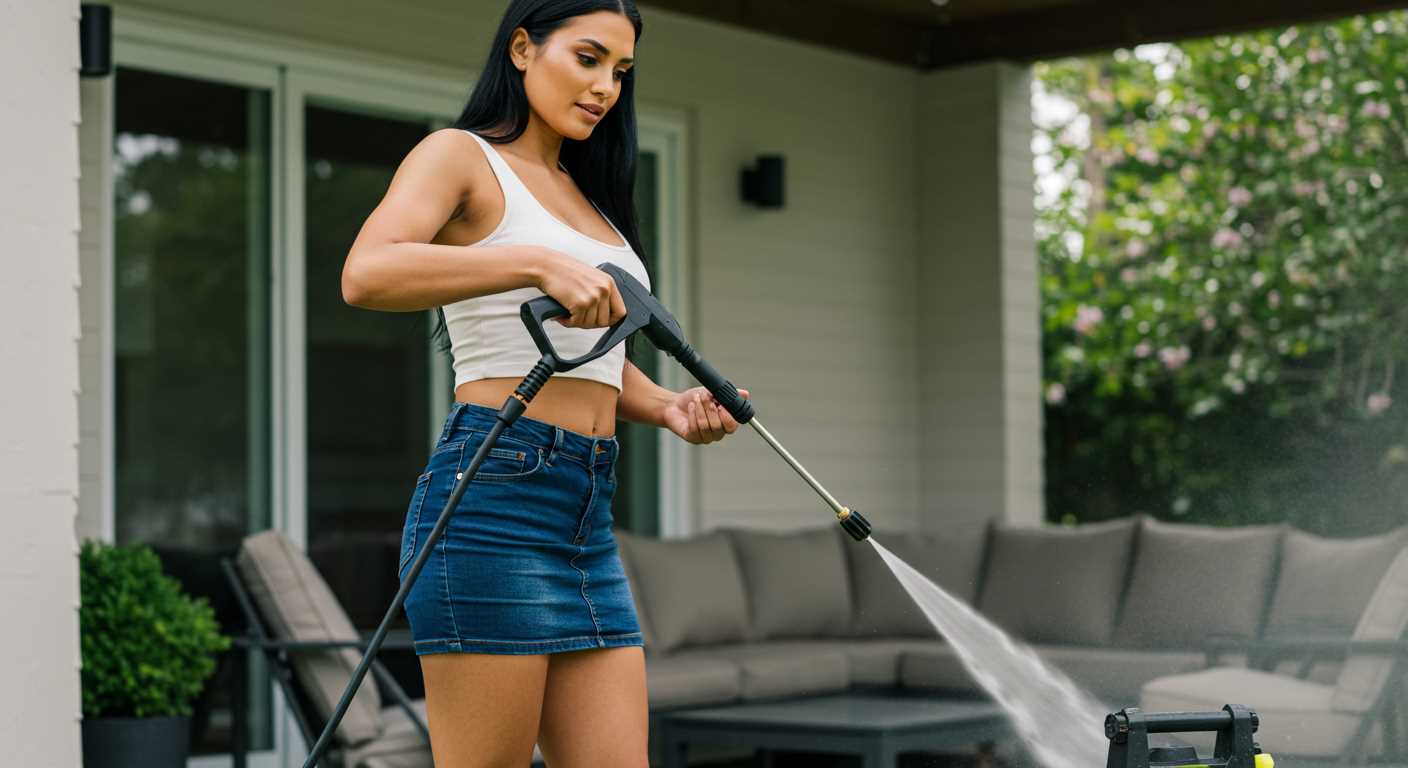




For optimal results, you can expect a high-pressure cleaning device to consume between 6 to 8 litres of fluid per minute during operation. This figure can vary significantly based on the model and its specifications. For instance, entry-level units may operate at lower rates, while professional-grade machines can push the boundaries up to 12 litres per minute.
During my years in the cleaning equipment industry, I’ve seen a range of water output across different brands. For home users, models that utilise around 7 litres per minute tend to strike a balance between power and conservation. If you’re tackling larger outdoor spaces, consider units that offer adjustable flow rates. This feature allows you to optimise fluid usage according to the task at hand, ensuring efficiency without sacrificing performance.
In practice, the type of nozzle you select also plays a critical role in consumption. A narrower spray pattern often results in reduced flow, allowing you to save on resources while still achieving effective cleaning results. Therefore, understanding these dynamics can lead to smarter choices and a more environmentally conscious approach to cleaning.
Understanding Pressure Washer Specifications
For optimal performance, pay attention to the flow rate, expressed in litres per minute (LPM). This figure indicates how quickly the unit can deliver the liquid required for effective cleaning. A model with a higher flow rate can be beneficial for larger areas or more stubborn grime.
Consider the pressure rating as well, typically measured in bar or PSI (pounds per square inch). A higher pressure allows for more forceful cleaning, making it easier to tackle tough jobs like removing oil stains from concrete or dirt from brickwork. However, be cautious; excessive pressure can damage delicate surfaces.
When evaluating features, look for adjustable nozzles or interchangeable tips. These allow for versatility in your cleaning tasks, providing a range of spray patterns from a wide fan to a concentrated jet. This adaptability can save you time and water by ensuring you use the right setting for each job.
Another aspect to consider is the detergent injection system. Some models come with built-in tanks for cleaning solutions, enhancing the effectiveness of your cleaning process. Just ensure that the selected detergents are compatible with your equipment to avoid any damage.
Don’t overlook the importance of mobility and storage. Units equipped with wheels or compact designs facilitate easy transport and stowing away after use. A longer hose can also improve reach, allowing you to cover more ground without constantly moving the machine.
Lastly, regular maintenance enhances longevity. Clean the filter, check for leaks, and ensure all components are functioning correctly. This proactive approach ensures you get the best performance from your machine over time.
Factors Influencing Water Consumption
Several elements dictate the volume of liquid consumed during cleaning tasks. First and foremost, the nozzle type significantly impacts efficiency. A narrow nozzle concentrates the flow, resulting in higher pressure and reduced liquid output, while a wider nozzle disperses the stream, requiring more liquid to achieve the same level of cleanliness.
Secondly, the task at hand plays a critical role. For instance, removing stubborn grime from a concrete driveway necessitates more fluid compared to lightly cleaning patio furniture. Each job demands a specific approach, affecting overall consumption rates.
The pressure settings also matter. Higher settings increase the intensity of the spray, allowing for faster cleaning with less liquid. Conversely, lower settings might require more time and, consequently, more fluid to achieve satisfactory results.
Maintenance of the equipment cannot be overlooked. A well-maintained unit operates more efficiently, optimising liquid usage. Regular inspections for leaks and blockages ensure that every drop counts towards effective cleaning.
Finally, environmental factors such as temperature and humidity can influence performance. In hotter conditions, surfaces may dry quickly, necessitating additional fluid to maintain effectiveness. Understanding these dynamics can help tailor usage to specific circumstances, ultimately leading to better resource management.
Average Water Usage for Different Models
When selecting a cleaning device, understanding the consumption rates across various models is crucial. Based on my extensive experience, here’s a breakdown of typical consumption figures for different categories.
| Model Type | Average Consumption (Litres/Hour) | Best Suited For |
|---|---|---|
| Entry-Level | 350 – 450 | Light household tasks, like cleaning patios and vehicles. |
| Mid-Range | 450 – 600 | Regular maintenance of outdoor spaces and garden furniture. |
| High-End | 600 – 800 | Heavy-duty cleaning, suitable for driveways and larger areas. |
| Commercial | 800 – 1000 | Frequent use in professional settings, like car washes and industrial sites. |
In my years of evaluation, it’s evident that the model type significantly impacts consumption rates. For instance, while testing various entry-level units, I found that their efficiency often met the demands of light tasks without excessive drainage. In contrast, high-end and commercial machines, while thirstier, offer unparalleled power for demanding jobs.
One memorable experience was using a mid-range model during a community event. It handled a large patio with ease, consuming around 500 litres in a couple of hours. This was a perfect example of balancing efficiency and performance without being wasteful.
Ultimately, selecting the right equipment involves considering not just its capabilities but also its consumption profile. Make sure to assess the intended use and choose a model that aligns with both your cleaning needs and your environmental considerations.
Comparing Electric and Petrol Pressure Washers
Electric models are typically more convenient for residential tasks, while petrol alternatives are well-suited for heavy-duty applications. In my experience, the choice largely hinges on the intended use.
- Electric Units:
- Ideal for light to moderate cleaning tasks, such as patios and vehicles.
- Generally consume less energy and are quieter, making them suitable for residential areas.
- Water flow rates often range from 300 to 600 litres per hour.
- Petrol Units:
- Best for tackling tougher jobs, like large driveways or industrial cleaning.
- Higher pressure and flow rates, often exceeding 800 litres per hour.
- Require more maintenance and can be louder, which may limit their use in populated areas.
In one instance, I was tasked with cleaning a large commercial property. I opted for a petrol model due to its power. The efficiency was remarkable; it cut down the time required significantly compared to an electric unit I had previously used for smaller projects.
However, for routine household chores, I found electric models to be more than adequate. The ease of use and lower running costs made them a practical choice for my personal needs. For anyone considering a purchase, assessing the scale of your cleaning tasks will guide you toward the right decision.
Ultimately, both types have their strengths. Electric machines excel in convenience and ease of use, while petrol counterparts shine in power and versatility. Choose based on your specific requirements to maximise efficiency and satisfaction.
Water Flow Rate vs. Water Pressure Explained
To achieve optimal cleaning results, understanding the relationship between flow rate and pressure is crucial. Flow rate, measured in litres per minute (L/min), indicates the volume of liquid delivered, while pressure, measured in bars or PSI, reflects the force of that liquid. A model with high pressure but low flow might clean stubborn grime effectively, but it could leave behind residues due to insufficient rinsing. Conversely, a unit with high flow but low pressure may wash away dirt efficiently but struggle with tougher stains.
In my experience, finding the right balance is key. For instance, during a recent project involving a heavily soiled patio, I used a unit with a flow rate of 10 L/min and a pressure of 120 bar. The combination allowed me to blast away dirt while rinsing thoroughly, leaving a clean surface without any residual mud.
It’s also important to consider the nozzle used. A narrow nozzle can increase pressure while decreasing flow, making it perfect for tough spots. However, for wider areas, a broader nozzle with higher flow can cover more ground quickly.
Additionally, always check the specifications before purchasing. Some models may list impressive pressure ratings but have a lower flow rate, which can limit their effectiveness for specific tasks. If you’re investing in equipment, reviewing the pressure washer warranty can provide peace of mind about your choice and its long-term reliability.
Estimating Water Use for Common Cleaning Tasks
For everyday cleaning activities, understanding the volume consumed can streamline your efforts. Here’s a breakdown based on various tasks:
- Driveways: Cleaning a standard car driveway typically requires around 75-100 litres. Expect to spend about 20-30 minutes for thorough results.
- Patios: A patio area of 20 square metres can consume approximately 50-80 litres. A quick wash might take 15-25 minutes, depending on the level of dirt.
- Vehicles: Washing a compact car tends to use about 30-50 litres. If you include detailing, it could stretch to 60-80 litres.
- Decking: Wooden decking often needs 40-60 litres for effective cleaning. This task usually takes around 30-40 minutes to ensure all grime is removed.
- Fences: Cleaning a wooden fence might require 60-100 litres, particularly if it hasn’t been maintained for a while. This can take upwards of 40 minutes.
These figures can fluctuate based on the specific model of your equipment and the condition of the surfaces you’re tackling. Regular maintenance reduces the need for extensive cleaning, ultimately conserving resources.
In my experience, tackling a few small jobs at once maximises efficiency. For example, I often clean the car and driveway together, which can save significant time and effort.
Always consider the task at hand and adjust your approach based on what works best for your environment. Every bit counts when it comes to responsible consumption.
Tips for Reducing Water Usage While Cleaning
Utilising a nozzle with adjustable spray settings can drastically decrease the volume of liquid consumed. When I first started testing various devices, I found that switching to a narrower spray pattern not only saved fluid but also improved cleaning efficiency on stubborn surfaces.
Select the Right Accessory
Choosing the correct attachment is crucial. For instance, when cleaning vehicles or delicate surfaces, a foam cannon can apply cleaning solutions more effectively, allowing you to use less fluid overall. I’ve had success using foam attachments that mix soap with air, producing a thick foam that clings to surfaces, reducing runoff.
Plan Your Cleaning Tasks
Prioritising your cleaning tasks can lead to significant savings. For example, I always start with the areas that require the most attention. This way, I can tackle the toughest jobs efficiently, avoiding multiple passes that waste valuable resources. Additionally, I recommend cleaning during cooler parts of the day to prevent evaporation, which can mislead you into thinking you’ve used more than you actually have.
Always inspect the area beforehand. Removing loose debris with a broom or brush can lessen the need for excessive rinsing, allowing you to focus on the spots that truly require intensive cleaning. I’ve found that a little preparation goes a long way in conserving resources.
Finally, consider employing a rainwater collection system for outdoor cleaning tasks. Not only does this approach help in reducing reliance on mains supply, but it’s also an environmentally friendly option. I’ve seen homeowners successfully implement this strategy, leading to noticeable reductions in their utility bills.
Environmental Impact of Pressure Washer Water Use
Using high-powered cleaning equipment has implications for the environment that shouldn’t be overlooked. I’ve witnessed firsthand how the choice of equipment and cleaning practices can either mitigate or exacerbate the ecological footprint of your cleaning activities.
Choosing models that are designed for lower consumption can significantly reduce the impact on local water supplies. For example, some electric units operate at a fraction of the consumption levels of their petrol counterparts. An electric model with a flow rate of 400 litres per hour can often achieve the same cleaning results as a petrol model that uses 600 litres per hour. This means not only saving resources but also reducing the energy required for heating water, if applicable.
Another aspect to consider is the source of the water. If you’re drawing from a well or other sustainable source, the impact may be less severe than if you’re tapping into a municipal supply, which can face shortages during peak usage times. I recommend checking local guidelines and initiatives aimed at conserving water, as these can guide you towards more sustainable practices.
Contaminants in the cleaning solutions you choose can also pose risks to ecosystems. Opt for biodegradable detergents that break down naturally and are less harmful to aquatic life. During my time testing various products, I found that many environmentally friendly detergents performed just as well as their chemical-heavy counterparts without the negative consequences.
Lastly, timing matters. Using this equipment during cooler parts of the day can reduce evaporation losses, particularly in warmer climates. I’ve noticed that cleaning surfaces early in the morning allows for better water retention and less waste. Always keep an eye on the forecast; rain can also play a role in reducing the need for additional cleaning, and planning ahead can save both time and resources.
Calculating Water Costs for Pressure Washing
To determine expenses associated with cleaning tasks, consider both the volume of liquid consumed and local utility rates. For instance, if your system operates at 500 litres per hour and your local charge is £2 per cubic metre, a single hour of operation will incur a cost of £1. This figure can add up, especially when tackling larger projects.
In my experience, it’s wise to estimate the total time spent on each job. For example, if a driveway takes around 45 minutes and a patio about 30 minutes, the cumulative consumption would be approximately 625 litres, resulting in a total cost of £1.25 for both tasks combined.
Additionally, consider the efficiency of your equipment. A high-flow rate model might consume more fluid but can significantly reduce cleaning time, ultimately saving you on both water and labour costs. I’ve seen units that are marketed as more efficient, yet their operational costs can be misleading if you don’t account for the overall time savings.
Another point to remember is the potential for discounts or tiered rates from your local supplier. If your usage exceeds a certain threshold, you might qualify for a reduced rate. Always check your billing structure to optimise your expenses.
For those in need of robust machines, exploring the best commercial pressure washers can also lead to finding models that are more economical in the long run due to their superior performance and lower consumption rates.
Lastly, don’t overlook maintenance. A well-maintained unit operates more efficiently, which can lead to reduced costs. Regular servicing can prevent leaks and ensure that everything is functioning as it should, ultimately saving you money over time.







.jpg)


